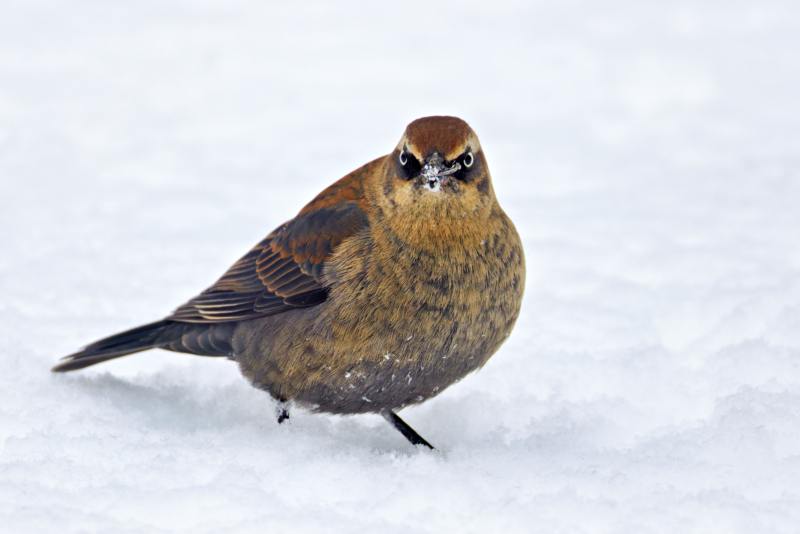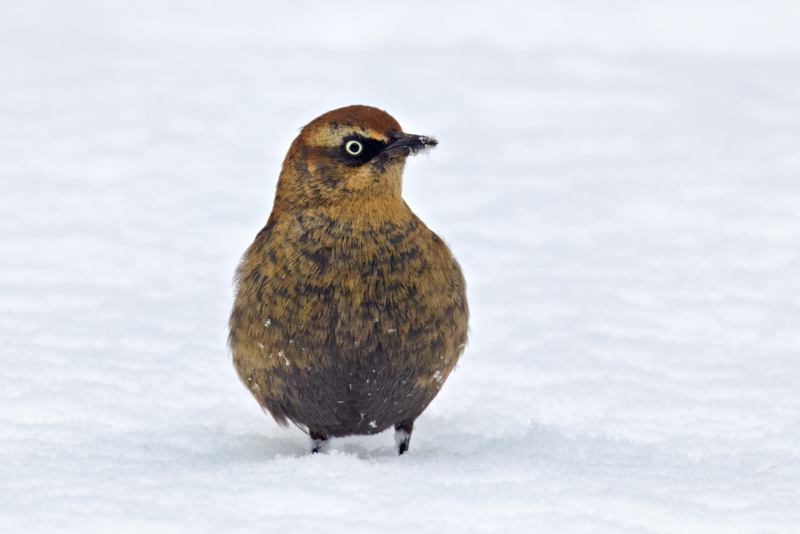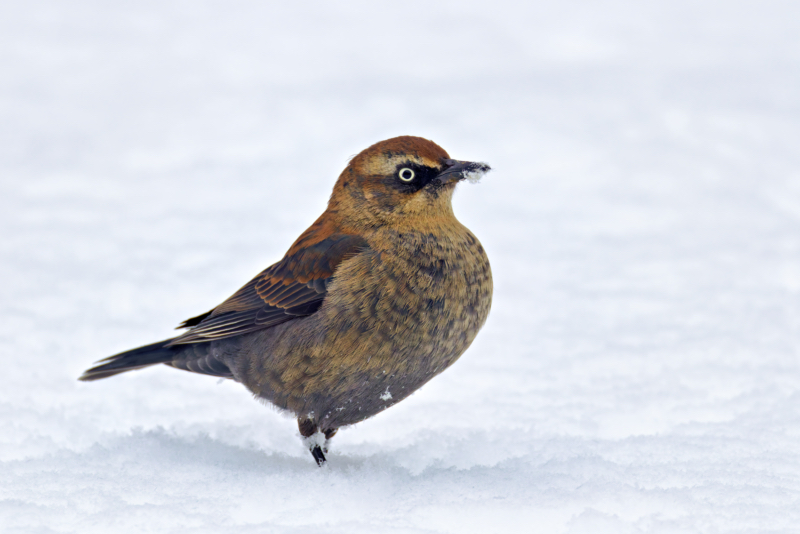On January 10, 2025, I had the rare treat of photographing a Rusty Blackbird in my yard after we received 10 inches of snow here in Arkansas. This was the first time I’ve ever seen this species in my yard. The bird stopped by my feeder and fed on sunflower seeds for several minutes before moving on. It was a solitary visitor, and I didn’t see any others nearby.

About the Rusty Blackbird
The Rusty Blackbird (Euphagus carolinus) is one of North America’s most rapidly declining songbirds. Its population has plummeted by an estimated 85-99% over the past few decades. Seeing one in my yard was both exciting and a reminder of the challenges this species faces. Arkansas plays an important role in their wintering ecology, as our wetland habitats provide critical refuge.
Key Facts About Rusty Blackbirds
- Habitat: In winter, these birds favor wetland environments, including swamps, flooded woods, marshes, and water edges. In Arkansas, they often inhabit bottomland hardwood forests and other floodplain areas, such as the Big Woods region.
- Behavior: Rusty Blackbirds forage on the ground in wet or muddy areas. While they sometimes mix with other blackbird species, their subtle markings and quiet vocalizations make them harder to notice. They often travel in small flocks, though this one visited solo.
- Identification: In winter, these birds display rusty-edged feathers and pale yellow eyes. Males are a dull black, while females are slate gray. Their rusty highlights are most prominent in fall and early winter, which made this individual especially striking against the snow.
- Conservation Status: The Rusty Blackbird is listed as vulnerable due to a significant decline in population. Habitat loss on both breeding and wintering grounds is a major factor.

Conservation Challenges
The steep decline of the Rusty Blackbird is believed to result from a mix of threats, including:
- Loss of wooded wetlands and floodplain forests due to agriculture and urbanization.
- Climate change altering both breeding and wintering habitats.
- Potential changes in food availability caused by environmental shifts.
Arkansas’s Role in Conservation
In Arkansas, efforts to conserve the Rusty Blackbird focus on protecting and restoring wetland habitats. Research shows that while they can adapt to modified environments like urban parks and pecan groves, traditional wetlands remain critical for their survival. Conservation initiatives here aim to maintain large, connected wetland systems to support the species.
Citizen Science and Research
Projects like the “Rusty Blackbird Spring Migration Blitz” encourage birdwatchers to report sightings, providing valuable data for researchers. If you spot a Rusty Blackbird, consider documenting it and submitting your observations to citizen science platforms like eBird. Every sighting helps conservation efforts.

Photographing this vulnerable species in the snow was a special experience. It’s a reminder of the role we can play in protecting Arkansas’s rich biodiversity. If you’re lucky enough to see a Rusty Blackbird, take the time to appreciate and document it—each encounter matters for conservation.
Related Links
- Check out my post from yesterday, “It Snowed in Arkansas: Birds in the Snow and a Special Visitor”, where I shared more about the snowy conditions and other bird visitors leading up to this rare Rusty Blackbird sighting.
- For more detailed information on identifying and understanding Rusty Blackbirds, visit their profile on All About Birds.

what a unique looking bird. I now think that I could identify that bird in the field.
Thanks!
Very interesting sighting!!